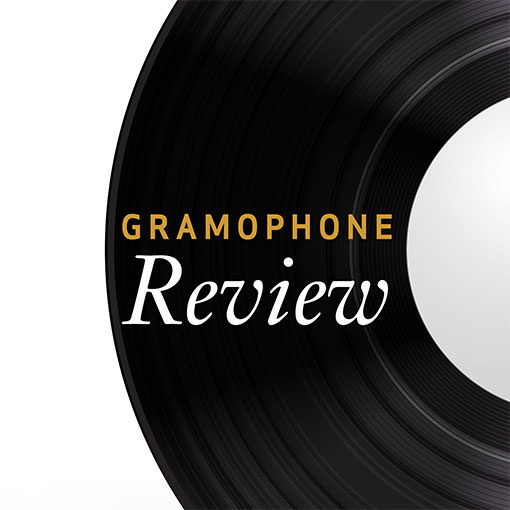Englund Epinikia; Symphonies 2 and 4
View record and artist detailsRecord and Artist Details
Label: Finlandia
Magazine Review Date: 8/1992
Media Format: CD or Download
Media Runtime: 0
Catalogue Number: 1576 50017-2

Composer or Director: (Sven) Einar Englund
Label: Finlandia
Magazine Review Date: 8/1992
Media Format: CD or Download
Media Runtime: 63
Mastering:
ADD
Catalogue Number: FACD017

Tracks:
| Composition | Artist Credit |
|---|---|
| Epinikia, 'Triumphal Hymn' |
(Sven) Einar Englund, Composer
(Sven) Einar Englund, Composer Helsinki Philharmonic Orchestra Paavo Berglund, Conductor |
| Symphony No. 2, 'Blackbird' |
(Sven) Einar Englund, Composer
(Sven) Einar Englund, Composer Helsinki Philharmonic Orchestra Pertti Pekkanen, Conductor |
| Symphony No. 4, 'dedicated to the memory of a grea |
(Sven) Einar Englund, Composer
(Sven) Einar Englund, Composer Espoo Chamber Orchestra Paavo Pohjola, Conductor |
Composer or Director: (Sven) Einar Englund
Label: Ondine
Magazine Review Date: 8/1992
Media Format: CD or Download
Media Runtime: 64
Mastering:
DDD
Catalogue Number: ODE751-2

Tracks:
| Composition | Artist Credit |
|---|---|
| Symphony No. 1, 'War Symphony' |
(Sven) Einar Englund, Composer
(Sven) Einar Englund, Composer Estonian Symphony Orchestra Peeter Lilje, Conductor |
| Symphony No. 2, 'Blackbird' |
(Sven) Einar Englund, Composer
(Sven) Einar Englund, Composer Estonian Symphony Orchestra Peeter Lilje, Conductor |
Author: Robert Layton
Though he was born on the Swedish island of Gotland, Englund settled in Helsinki, where he studied and later, after a spell of study in Tanglewood with Copland, taught. On returning home after his service on the front in 1945, he burned all his wartime manuscripts and sketches, and wrote this symphony, his first orchestral piece—and a remarkably accomplished piece it is! It became known in his native country as the War Symphony, though the composer characterized it as an expression of ''a euphoric joy at having—by a sheer miracle—come through four years of hell during the Second World War alive''. The musical language has more in common with Shostakovich than any other modern composer, but it is far from derivative. The idiom is accessible and there are memorable melodic ideas. The Second Symphony is something of a discovery—the very opening bars in their evocation of nature are almost prophetic of the Tippett of The Midsummer Marriage, and the second movement with its overtones of Shostakovich and its Sibelian undercurrents is really quite powerful. It is only in the finale that he resorts to the (to my ears) rather conventional stock-in-trade Prokofiev-Shostakovich finale (there is a sequential passage that could even come out of Arnold—try track 7, 1'24'' - 1'58'' and you will see what I mean). But while I would not stake the greatest claims for either symphony, neither is as concentrated or densely argued as, say, a Tubin or Rawsthorne symphony, Englund is a real composer who knows a thing or two about musical movement and development and has a well-stocked imagination. The Estonian Symphony Orchestra under Peeter Lilje give a good account of themselves and the recording made in the Philharmonia Hall in Tallinn is very good indeed.
Finlandia have reissued a transfer of the 1976 Helsinki recording of the Second Symphony with Pertti Pekkanen conducting the Helsinki Philharmonic, and a 1980 version of the Fourth for strings and percussion. Incidentally, the Second Symphony is subtitled Blackbird, an allusion Eng- lund explains in his interview with Martin Anderson on page 8. Generally speaking, this performance has greater intensity and fire than the newer Estonian rival, though the recording quality is less refined. The Helsinki orchestra plays with a sense of total commitment.
The Fourth Symphony comes from 1976 and was the outcome of a commission from Yleisradio (Finnish Radio) in honour of Englund's sixtieth birthday. It is scored for strings and percussion and pays homage to Shostakovich, news of whose death prompted its composition. There are some effective orchestral effects: the tolling of the bells and clockwork-like ticking of the string pizzicatos in the scherzo are, so Englund tells us, symbolic of the brevity of existence. In fact I have to say that the shadow of Shostakovich looms far too large for comort here. There is also a veiled reference to Tapiola to honour his great countryman who gave him some encouragement in the early 1940s. The short one-movement Epinikia (''Triumphal Hymn'') of 1947, which was composed for the Olympic Games, completes the disc. For all the merits of the Finlandia disc, I'm inclined to think the Estonian coupling offers the better introduction to this composer.'
Discover the world's largest classical music catalogue with Presto Music.

Gramophone Digital Club
- Digital Edition
- Digital Archive
- Reviews Database
- Full website access
From £8.75 / month
Subscribe
Gramophone Full Club
- Print Edition
- Digital Edition
- Digital Archive
- Reviews Database
- Full website access
From £11.00 / month
Subscribe
If you are a library, university or other organisation that would be interested in an institutional subscription to Gramophone please click here for further information.





